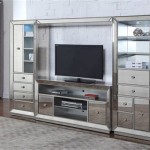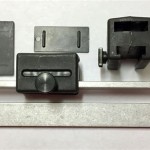How to Mirror iPhone to MacBook Air (2020)
Mirroring an iPhone's screen to a MacBook Air offers a convenient way to share content, present information, or enjoy mobile applications on a larger display. Several effective methods facilitate this screen mirroring process, each with its own advantages and limitations.
Using AirPlay with Compatible Apps
AirPlay is Apple's proprietary technology for wirelessly streaming audio and video content between devices. Utilizing AirPlay to mirror an iPhone to a MacBook Air requires both devices to be connected to the same Wi-Fi network and compatible software. Many popular apps, such as Apple’s own Photos, Videos, and Music apps, along with various third-party streaming and presentation applications, natively support AirPlay. To mirror, users typically select the AirPlay icon within the app, choose their MacBook Air from the available devices, and the iPhone’s screen is mirrored.
Mirroring with QuickTime Player
QuickTime Player, a pre-installed application on macOS, provides a reliable wired mirroring solution. Connect the iPhone to the MacBook Air using a USB cable. Open QuickTime Player and select "New Movie Recording" from the File menu. Next, click the dropdown arrow next to the record button, select the connected iPhone as the camera and microphone source. The iPhone's screen will then be displayed in the QuickTime Player window, effectively mirroring the device.
Utilizing Third-Party Mirroring Software
Various third-party applications offer additional features and functionality for screen mirroring beyond the built-in options. These applications often provide advanced controls for recording, adjusting display settings, and streaming to multiple devices. Researching and selecting a reputable third-party mirroring software can offer a tailored experience for specific user mirroring needs. Some popular options include Reflector, LonelyScreen, and AirServer. These applications often offer a free trial period, allowing users to explore their features before committing to a purchase.
Troubleshooting Common Mirroring Issues
Occasionally, users may encounter issues during the mirroring process. One common issue is network connectivity problems. Ensure both the iPhone and MacBook Air are connected to the same Wi-Fi network and that the network is functioning correctly. Restarting the router can sometimes resolve network issues. Another potential problem is outdated software. Confirm that both devices are running the latest versions of their respective operating systems. Software updates often include bug fixes and performance improvements that can address mirroring problems.
Optimizing Mirroring Performance
Several factors can influence the performance of screen mirroring. Minimizing the number of devices connected to the Wi-Fi network can improve bandwidth availability and reduce latency. Closing unnecessary applications running on both the iPhone and MacBook Air can also free up system resources, leading to a smoother mirroring experience. Additionally, reducing the brightness of the iPhone’s display can conserve battery life during extended mirroring sessions.
Leveraging Mirroring for Presentations
Screen mirroring offers a powerful tool for presentations. By mirroring an iPhone to a MacBook Air connected to a projector, presenters can seamlessly share mobile content with a larger audience. This eliminates the need for cumbersome cable connections or transferring files. Utilizing presentation applications on the iPhone, combined with the larger display offered by the MacBook Air and a projector, creates a dynamic and engaging presentation environment.
Mirroring for App Development and Testing
Developers frequently utilize screen mirroring for testing and debugging mobile applications. Mirroring an iPhone to a MacBook Air allows developers to observe their app's behavior on a larger screen, facilitating the identification of UI/UX issues and performance bottlenecks. This process also enables developers to demonstrate their applications in progress to clients or colleagues without requiring physical access to the device.
Considerations for Wireless vs. Wired Mirroring
Choosing between wireless and wired mirroring depends on specific requirements. Wireless mirroring offers greater flexibility and mobility, allowing users to move around freely. However, wireless connections are susceptible to network interference which can result in latency or dropped connections. Wired mirroring, using a USB cable, offers a more stable and reliable connection with minimal lag. However, the wired connection restricts the user's mobility during the mirroring session.

How To Mirror Iphone Mac 8 Methods

How To Mirror Iphone Screen Mac Quick Easy Wireless 2024

2024 Updated How To Mirror Iphone Mac With 5 Methods

How To Mirror Iphone Screen Mac Quick Easy Wireless 2024

How To Mirror Iphone Mac Without Hassle

How To Mirror Iphone Screen Mac Quick Easy Wireless 2024

2024 Updated How To Mirror Iphone Mac With 5 Methods

How To Use Apple Airplay Mirror Your Iphone Mac Screen On Tv Roku And More Cnet

How To Airplay From Iphone Or Ipad Mac 9to5mac

Use Airplay To Stream Or Mirror The Screen Of Your Iphone Ipad Apple Support Hk








